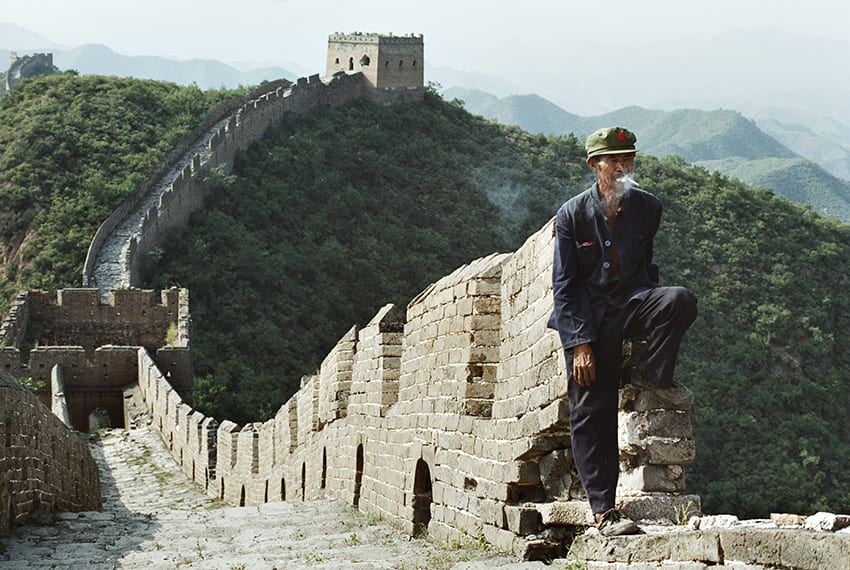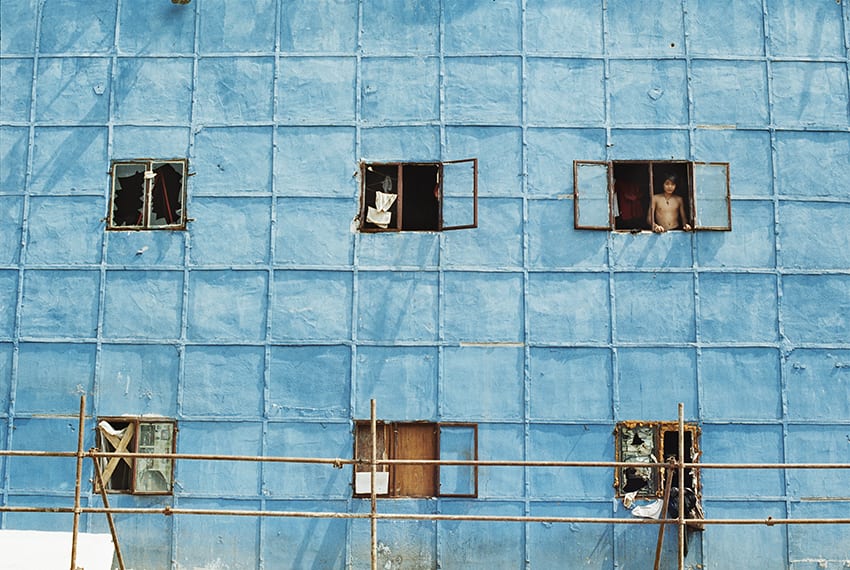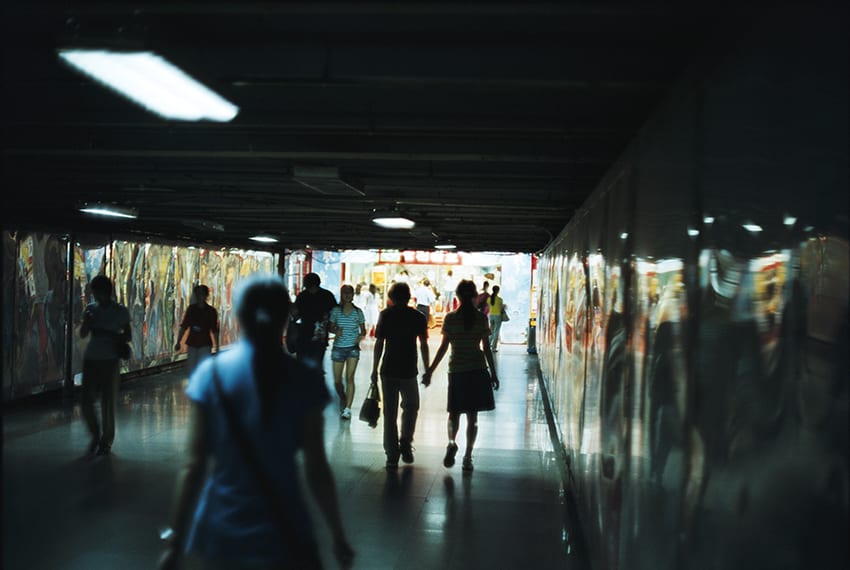Marc Moitessier is a photographer from Marseille, France. His most recent, and perhaps most challenging, body of work is 36 Poses, a project borne out of his frustration with himself and the over-saturated photography industry. Ignited by the feeling that he was taking too many photographs, and no longer feeling excited by them, Moitessier set out to Beijing, where he didn’t speak the language, and with little more than his camera, a fix lense, and a single role of 36 exp film. The aim? To take a single photograph each day, a challenge so intense that after completing the project, Moitessier didn’t touch the photographs for ten years.
The images themselves tell a different story. They capture quiet moments; a group of men playing cards in a local park, people slurping large bowlfuls of noodles, a guard smoking as he leans against the Great Wall of China. Perfectly composed, it’s difficult to believe that the photographs were taken in just a single shot – a testament to Moitessier’s craftsmanship. We spoke to Moitessier about how changing the way he uses his camera has changed his state of mind, and his way of seeing the world.

Can you tell me about your project 36 Poses?
36 Poses was based on a very simple concept, with a few strict rules: I was to go alone to a place where I knew no one, and where I could hardly communicate with anyone. I went with absolutely no luggage, just a passport, some cash, a notebook and my camera, with a fix lense and a single role of 36 exp film. I had nothing electronic with me; no phone, computer, watch, or even a credit card, and I was to walk from sunrise to sunset, for 36 days, searching for a single photograph each day, no more and no less.
So I left for Beijing for 36 days. I chose Beijing because I don’t speak Chinese, and because I wanted to get lost in a city. I wanted to discover a kind of urban loneliness. Walking alone in huge crowds offers a very different kind of loneliness than being alone in the desert or ocean. In Beijing, I found myself surrounded by swarms of people, constantly searching for something or someone I could connect to.
Where did the idea for the project come from?
It came from the realisation that I was taking too many pictures. In my lifetime, I have taken over half a million photographs. I think every photographer takes too many pictures, actually. There are so many that we don’t remember them. I wanted to change the rules by just using a single roll of film.

How did taking one photograph per day affect your artistic process?
It changed it completely. Besides the obvious, there are many factors that affect the process; the absence of electronics, the exhaustion of walking alone for 12 hours per day, and the constant doubt of my own capacity to recognise that one and only photography I allowed myself to take each day.
When you can only take one photograph, how do you choose from so many scenes? It became a fight between two different entities; an artist looking for freedom in the project, and a professional photographer anxious of the judgement that might come about his work. I was both looking for 36 authentic encounters, and urging myself to bring back 36 masterpieces.
Did you set out with certain expectations for 36 Poses? If so, did the end result meet these expectations?
I set out with no expectations at all, except testing my own will. I thought, when I began, that I had invented a total concept of freedom. But actually, I had to learn to manage frustration 24 hours a day. The photographs taken in the morning told of different sufferings than those taken in the afternoon.

After you completed the project, you didn’t look at the photographs for ten years. Why did you decide to wait for so long before looking at them?
When I was there, everything I experienced was ten times stronger than in normal life. If someone smiled at me, I had the feeling that something incredible had happened to me. Loneliness, tiredness, walking for twelve hours a day in the heat, not communicating with anyone, and being worried about the photography, changes your way of thinking. It put me in a completely different state of mind.
When I came back, I knew I wanted to write a book about my experience. Photographs can be so strong that they can erase many things that happen in reality. I wanted to write free of mind, and to write about my experience without being guided by the photographs. To put it simply, I didn’t want to write a book about 36 photographs, I wanted to write about the experience, so I didn’t touch the photographs for several years.
What was your reaction when you finally looked at the images after all that time?
I was afraid. It felt like knowing you are going to meet someone you have secretly loved for many years, but when you finally see them, you realise they are just a human being, and after a few minutes things feel normal. There isn’t a godlike figure in front of you, they are just a person with the same value as you.
The photographs felt like family very quickly, and I learnt to like the ones I didn’t like shooting, and to appreciate them almost as much the others.

Many of the photographs focus on typical, universal human experiences. Why do think photography is so good at unifying people?
When you see the ‘other’, and when you understand the ‘other’, you start to accept them. In some way, in all of my work, I am just trying to show the beauty of the person I am photographing, so people can understand and relate to them. In 36 Poses, I was trying to show that people in China are just like people here in France, and all over the world. They cook, they eat. There is space for us all to sit at the same table.
Do you want to be part of the movement? Together, we will create a Portrait of Humanity




